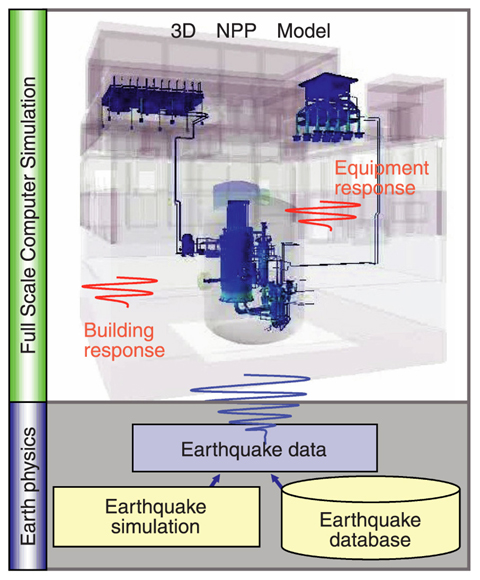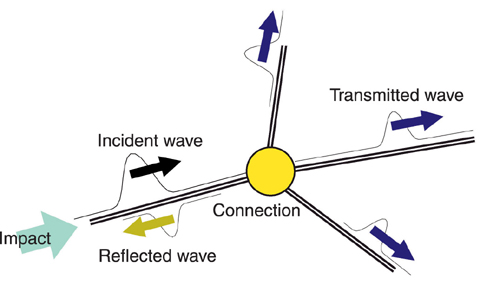
Fig.10-4 Vibration simulator for full-scale nuclear plant

Fig.10-5 Wave reflections and transmissions at a connection
Since research and development for a more reliable inspection of safety of nuclear plants is an extremely important problem, we are cooperating with industry to examine this problem, establishing a special committee of the Atomic Energy Society of Japan. To solve this problem, a maintenance management experiment or an aging inspection experiment using an actual nuclear reactor or a nuclear plant under real conditions in a real environment is necessary. However, this kind of experiment has the disadvantages of large costs and long time being required, and hence, it is not easy to perform such experiments. Therefore, at the Center for Computational Science and E-systems, we began a trial of a safe and effective safety evaluation of a nuclear plant employing computational science technology. As the first step, we are tackling the issue of research and development of simulation of three-dimensional vibration of an entire nuclear plant, which cannot be done using an experimental vibration table.
This technology, referred to as vibration simulator for full-scale nuclear plant, digitizes a three-dimensional model of an entire nuclear plant in a computer and makes it possible to simulate various phenomena that occur in a nuclear plant by combining the conventional technology on earthquake and ground motions (Fig.10-4). The calculation of the resonances of a complicated structure with high precision through vibration analysis is one of the indispensable technologies required to realize this vibration simulator for full-scale nuclear plant.
In the resonance phenomenon, the vibration energy of earthquakes transmits as a wave in a structure, leading to the reflection and transmission of the wave at connections, which are points of discontinuity (Fig.10-5). This phenomenon repeats itself at a lot of connections, and the structure is strongly shaken where the energy is concentrated and the vibration is amplified. Resonance is generated over a wide frequency range that varies from the vibrations of the entire structure to some local vibrations of a structural component. Further, in the worst case scenario, the resonance may lead to the collapse of the structure in a few seconds. The aim of this study is to improve the safety of a nuclear plant by analyzing the resonance state through computational science technology, and to provide solutions for the reduction of resonance in a complicated structure.
It was possible to evaluate the problem of resonance of vibrations in the entire structure by conventional computational science technology; however, local structure vibration could not be evaluated with sufficient precision because the reflected wave could not be sufficiently modeled by conventional technology. Therefore, we attempted to develop a wave propagation simulation technique that can evaluate the vibrations of local structures as well as those of entire structures. Our proposed technique was applied to a piping structure and was successful in simultaneously treating entire and local structure vibrations; this technique could be applied to an actual nuclear plant. As a result, it can be used to calculate the resonances of a complex structure with high precision and provide solutions for reducing them.